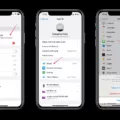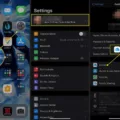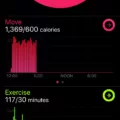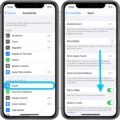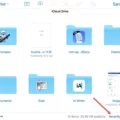ICloud Backup is a convenient feature offered by Apple that allows users to back up their iPhone or iPad data to the cloud. This ensures that your important files, photos, and settings are safely stored and can be easily restored if needed. However, constant iCloud backup notifications can be annoying and disruptive. In this article, we will explore how to stop iCloud notifications on your iPhone or iPad and get rid of the iCloud backup notification for good.
To start, open the Settings app on your device. Look for the “Apple ID” section at the top of the Settings menu and tap on it. This will take you to your iCloud settings. Scroll down until you find the “iCloud” option and tap on it.
Within the iCloud settings, you will see a list of apps that are using iCloud. Look for the “iCloud Backup” option and tap on it. This will take you to the settings specifically related to iCloud backups.
In the iCloud Backup settings, you will see a toggle switch that allows you to turn off iCloud backup. Tap on the switch to disable iCloud backup for your device. This will stop the automatic backups and, consequently, the backup notifications.
However, if you want to completely get rid of the iCloud backup notification, you may need to delete existing backups. To do this, go back to the main iCloud settings and tap on “Manage Storage” or “Manage Account Storage.” This will show you a list of all the devices associated with your iCloud account.
Tap on the name of the device for which you want to delete the backup. This will take you to the backup details page. Look for the option to “Delete Backup” and tap on it. Confirm your action when prompted to delete the backup.
Once the backup is deleted, you can also turn off iCloud Backup for that specific device. Tap on “Turn Off & Delete” to disable iCloud Backup and remove the backup files from your iCloud storage.
By following these steps, you should be able to stop iCloud notifications on your iPhone or iPad and get rid of the iCloud backup notification. Keep in mind that disabling iCloud backup means that you will no longer have automatic backups of your device’s data. It is recommended to find an alternative backup solution to ensure your important files are protected.
ICloud Backup is a useful feature for iPhone and iPad users, but the constant notifications can be bothersome. By disabling iCloud backup and deleting existing backups, you can put an end to the iCloud backup notification for good. Remember to consider an alternative backup solution to keep your data safe.
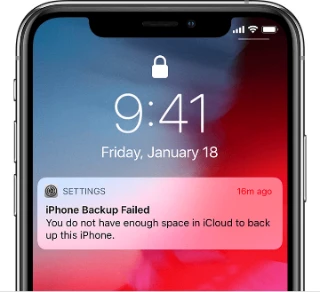
How Do You Turn Off iCloud Backup Notifications?
To turn off iCloud backup notifications on your iPhone or iPad, follow these steps:
1. Open the Settings app on your device.
2. Tap on your Apple ID at the top of the Settings menu.
3. In the Apple ID menu, scroll down and tap on “iCloud.”
4. Once in the iCloud settings, continue scrolling down until you see the “Apps Using iCloud” section.
5. Under this section, locate and tap on “iCloud Backup.”
6. On the iCloud Backup screen, you will see a toggle switch. Tap the switch to turn off iCloud backup.
How Do You Get Rid Of The iCloud Backup Message On Your iPhone?
To get rid of the iCloud backup message on your iPhone, follow these steps:
1. Unlock your iPhone and go to the Settings app.
2. Scroll down and tap on your Apple ID, which is usually located at the top of the Settings menu.
3. In the Apple ID menu, you will find the “iCloud” option. Tap on it.
4. Look for the “Manage Storage” or “Manage Storage & Backup” option and tap on it.
5. In the “Backups” section, you will see a list of devices that are using iCloud backup. Tap on the name of your iPhone.
6. A new screen will appear with details about your iPhone’s backup. At the bottom of this screen, you will find the “Delete Backup” option. Tap on it.
7. A confirmation message will pop up, asking if you want to delete the backup and turn off iCloud Backup for your device. Tap on “Turn Off & Delete” to proceed.
8. Your iPhone will now delete the backup from iCloud and turn off iCloud Backup for your device.
By following these steps, you will be able to get rid of the iCloud backup message on your iPhone.
Why Are You Getting a Message That Your iCloud is Full?
There are multiple reasons why you might receive a message indicating that your iCloud storage is full. Here are some possible explanations:
1. Large file sizes: iCloud offers limited storage space, and if you have numerous files or large-sized content such as photos, videos, or documents stored in iCloud, it can quickly consume your available storage.
2. Backups: When you enable iCloud backup on your iPhone, iPad, or Mac, it automatically saves a copy of your device’s data to the cloud. Over time, these backups can accumulate and fill up your iCloud storage if you don’t regularly delete old or unnecessary backups.
3. App data: Some apps automatically sync and store data in iCloud, which contributes to your storage usage. This includes app settings, documents, and other data associated with specific applications.
4. Email and messages: Attachments received through email or multimedia messages (MMS) can consume iCloud storage if they are saved in your iCloud account. These attachments may include photos, videos, or any other files shared via email or messaging apps.
5. Shared content: If you use iCloud’s sharing features, such as shared albums in Photos or collaborative documents in Pages, Numbers, or Keynote, the shared content may also count towards your iCloud storage capacity.
6. iCloud Drive: If you use iCloud Drive to store files and folders, any data saved in this feature will utilize your iCloud storage space. This includes documents, presentations, spreadsheets, and other files stored in iCloud Drive.
To free up iCloud storage space, you can take the following steps:
– Review and delete unnecessary backups: Go to your device’s iCloud settings and manage your backups. Remove any old backups or ones you no longer need.
– Optimize iCloud Photo Library: Enable the “Optimize Storage” option in your Photos settings. This feature automatically stores lower-resolution versions of your photos and videos on your device, while the full-resolution versions are stored in iCloud.
– Delete unwanted files: Manually go through your iCloud Drive and delete any files or folders that are no longer necessary.
– Manage email and messages: Regularly delete email attachments or multimedia messages that you no longer need to keep.
– Disable app data syncing: In your iCloud settings, review which apps are using iCloud to store data and disable syncing for apps that you don’t require.
By understanding the various factors that can contribute to a full iCloud storage, you can take appropriate actions to manage your storage space effectively.
Conclusion
ICloud Backup is a useful feature that allows iPhone and iPad users to securely store their device data in the cloud. However, for those who find the constant notifications and limited storage space to be a hassle, there are simple steps to stop iCloud notifications and manage backup settings.
By accessing the Settings app on your device and navigating to the iCloud section, you can easily disable iCloud backup. This will prevent your device from automatically backing up its data to the cloud, freeing up space and reducing the number of notifications you receive.
Additionally, if you have old backups taking up unnecessary space, you can delete them by going to the iCloud settings and selecting the specific backup you want to remove. This will help optimize your iCloud storage and ensure that only relevant and recent backups are retained.
By following these steps, you can take control of your iCloud notifications and storage, allowing for a more streamlined and efficient user experience. So, if you find yourself overwhelmed by iCloud notifications or running out of storage space, don’t hesitate to take advantage of these simple solutions.

